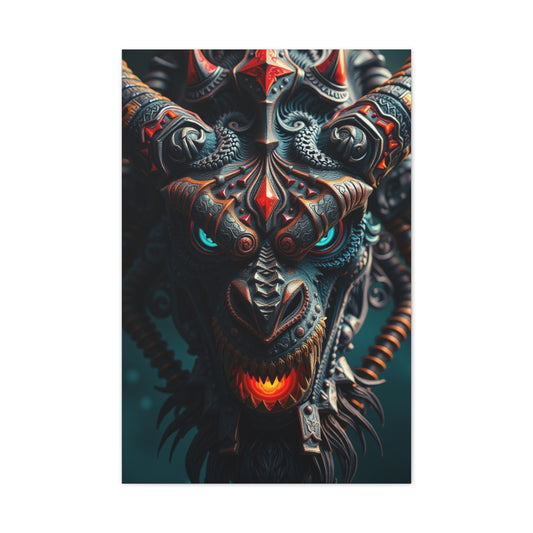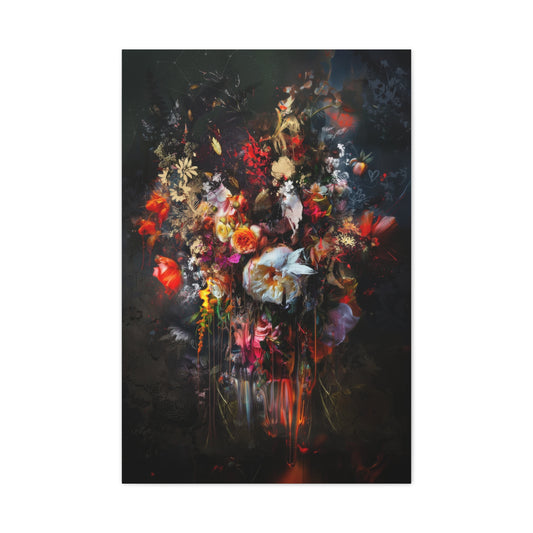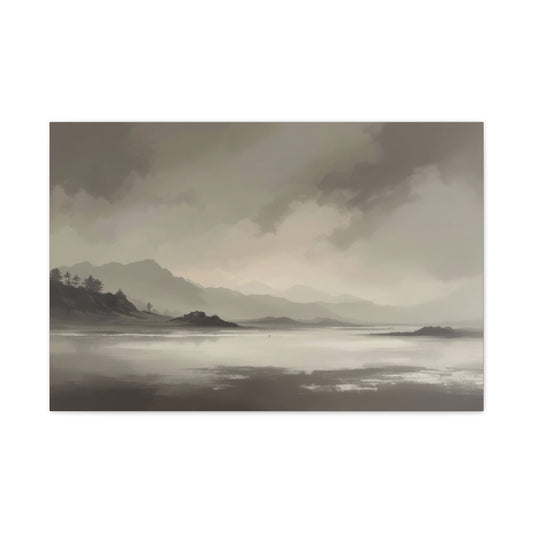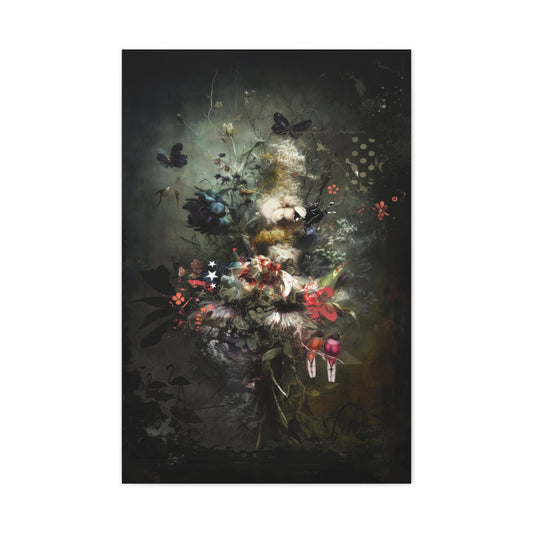Capturing the elegance and vibrancy of flowers is one of the most fulfilling types of mobile photography. Whether you're standing in a wildflower meadow, strolling through a botanical garden, or simply arranging a bouquet at home, floral photography with a smartphone can yield surprisingly powerful results. With a few smart adjustments to technique, perspective, and creativity, your mobile phone can become a powerful artistic tool.
This comprehensive guide explores 12 practical and imaginative tips that will help you elevate your flower photography. From mastering the light to using simple accessories, these suggestions are designed to help you turn everyday floral shots into extraordinary visual compositions.
Maximize Portrait Mode for Stunning Depth and Refined Focus
Portrait mode has revolutionized mobile photography. Initially introduced to enhance portraits of people, this mode has evolved into a powerful tool for still life and nature photography—including flower photography. By creating a digitally simulated shallow depth-of-field, portrait mode draws attention directly to the subject, rendering the background into a smooth, blurred texture often referred to as “bokeh.”
For flower photographers, this function can be transformative. When you photograph a bloom using portrait mode, your camera prioritizes the subject’s outline, keeping it in crisp focus while gently fading the environment into soft tones. This separation adds a painterly quality to the image, emphasizing the flower’s contours, color gradients, and petal structure in ways that a standard photo mode often cannot achieve.
This effect is particularly effective when photographing single blooms or a small group of flowers in areas with visually busy surroundings—such as public gardens, sidewalks, or natural landscapes. In such situations, background elements like twigs, signage, or pedestrians can become distractions. Portrait mode helps isolate the flower from these potential interruptions and draws the viewer’s eye immediately to the intended subject.
Most smartphones now offer the ability to adjust the strength of the background blur either before or after taking the photo. This gives you greater creative control. For subtle elegance, a light blur might suffice. For a dramatic artistic style, increasing the blur creates that dreamy softness often seen in professional botanical photography. Some devices even allow you to simulate various aperture sizes, adding to the illusion of lens-based depth-of-field.
To get the most from portrait mode, start by choosing a subject with visual clarity. Flowers with strong shapes, layered petals, or defined edges tend to stand out better in this mode. Ensure your subject is adequately lit and avoid situations where the flower blends into the background too closely in color or tone—this can confuse the camera’s depth mapping, resulting in unnatural blur transitions or digital artifacts.
|
Related Catagories: |
Another tip is to avoid overly bright backdrops when using portrait mode. High-contrast lighting can disrupt the digital bokeh effect and may cause unintended exposure issues. Ideally, shoot under even lighting conditions, such as on an overcast day or in the shade, where the subject and background maintain a balanced tonal range.
Distance matters too. Portrait mode works best when there is a noticeable space between the flower and the background. This separation enhances the blur effect and gives the image a more three-dimensional quality. If the flower is too close to a wall or other surface, the background blur may appear artificial or ineffective.
When composing your shot, think carefully about framing. Place the flower off-center to create visual tension or follow the rule of thirds for a more dynamic composition. Portrait mode’s natural tendency to soften edges will lend a subtle elegance to your final image, making it feel both polished and emotionally resonant.
Whether you're capturing the delicate elegance of a rose or the cheerful complexity of a sunflower, portrait mode can dramatically elevate your floral photography. It blends convenience with artistic depth, allowing your smartphone to produce results that mirror the sophistication of traditional camera techniques.
Simplify Backgrounds to Let Your Subject Stand Out
In the realm of photography, one of the most overlooked yet essential elements is the background. A flower may be visually stunning, but if it competes with a cluttered or distracting backdrop, the final image may lose its impact. Simplifying the background is a fundamental technique that allows the subject to shine.
When shooting flowers with your smartphone, the background should enhance—not dominate—the subject. Pay close attention to what sits behind your flower. Are there harsh lines, contrasting colors, or foreign objects that distract from the natural beauty of the bloom? Often, simple awareness and slight repositioning can transform a good photo into a great one.
Start by examining your surroundings from multiple angles. Move around your subject slowly and observe how the background shifts. A step to the left or crouching lower might reveal a patch of soft greenery instead of a distracting building or fence. By using the flower as the main anchor and allowing the background to frame it naturally, your composition becomes stronger and more visually cohesive.
Another strategy is to lower your perspective and shoot from below the flower, aiming upward. This approach not only offers a fresh viewpoint but also often replaces cluttered ground-level backgrounds with clean expanses of sky or tree canopy. The flower takes center stage in this setup, with minimal background interference.
In locations where simplification is not naturally possible—such as urban settings or garden spaces with mixed plantings—you can introduce your own background. A piece of white or black foam board, cardboard, or even fabric can be positioned behind the flower to create a neutral, consistent backdrop. These portable backgrounds are lightweight and affordable, making them great additions to any mobile photographer’s toolkit.
Texture is another element to consider. While a plain background reduces distraction, sometimes a lightly textured surface—like aged wood, foliage, or gravel—can provide subtle visual interest. The key is to ensure that the background’s tone and detail do not overpower the flower’s shape and color.
Color contrast also plays a critical role. A white flower against a white or pale background may blend in too much, while a deep-colored flower in front of a dark setting might lose definition. Aim for contrast that complements without competing. For example, a bright pink bloom against soft, green leaves can create a visually pleasing image with natural harmony.
Additionally, consider the role of light in shaping your background. Bright sunlight can cast hard shadows and create uneven lighting behind the subject. Diffused light, on the other hand, minimizes sharp contrasts and helps keep the viewer's attention focused on the flower itself.
If you're photographing indoors, it's even easier to control the background. Drape a cloth over a chair, use a painted wall, or set up a temporary backdrop with a curtain or bedsheet. Indoors, you also have the advantage of being able to place the flower wherever the lighting is most flattering—near a window, under a skylight, or even next to a desk lamp softened with parchment paper.
For those who prefer minimal post-processing, getting the background right in-camera means fewer edits later. However, if you're comfortable with photo editing apps, you can also blur the background manually, clone out distracting elements, or adjust background tones to better suit your subject. Tools like Snapseed and Lightroom Mobile offer selective editing options that can help you refine background elements without compromising the overall image quality.
Remember, the purpose of simplifying the background isn’t to make it invisible—it’s to make it supportive. When the background serves the flower instead of distracting from it, the final image feels intentional, balanced, and emotionally engaging.
Explore Unique Angles to Add Visual Interest
Many beginner photographers tend to capture flowers from a top-down angle because that’s how we naturally view them—standing above and looking down. While this perspective is familiar, it rarely does justice to the flower’s three-dimensional structure or unique visual characteristics. To create captivating flower photography with your smartphone, stepping out of this visual routine can make a world of difference.
Shooting from unusual angles introduces novelty to your images and highlights aspects of the flower that are often overlooked. When you photograph from the side, you emphasize the contour of petals, the curvature of the stem, and the way light interacts with each fold. This angle can also reveal subtle textures and tonal variations that add richness and depth to the image.
Going even lower—positioning your phone beneath the flower and shooting upward—can produce striking results. This perspective can frame the bloom against the sky or a tree canopy, replacing distracting ground elements with clean and natural backgrounds. It can also make the flower appear grander and more dominant in the composition, adding a sense of stature and presence.
Another unconventional but visually compelling angle is from behind the flower. While the front-facing petals may seem like the obvious subject, the backside can offer intricate detailing in the stem attachment, petal veins, or even pollen-covered undersides. This angle invites curiosity and shifts the viewer’s perspective, prompting a second look and a deeper appreciation of the subject.
Experimenting with angles doesn’t require sophisticated gear—just a willingness to get close, move around, and view your subject from multiple positions. Crouch down, lie on your stomach, or hold your phone at unusual angles. Smartphones are lightweight and easy to maneuver, making them ideal for this kind of photographic exploration.
To further enhance your creative range, use natural elements to frame your shot. Shooting through other flowers, leaves, or branches can add foreground blur and visual layering, guiding the viewer’s eye toward the main subject. These techniques bring dynamism to your image and help it stand out in an oversaturated world of top-down floral snapshots.
Angle experimentation is especially rewarding when capturing flowers with complex structures, such as orchids, irises, or dahlias. These blooms have intricate forms that benefit from a more sculptural approach, and photographing them from a variety of angles allows you to emphasize those design elements.
Additionally, different angles interact with light in distinct ways. The way sunlight filters through translucent petals or the shadow patterns cast on the background changes dramatically with your shooting position. By moving around and observing these changes, you gain more control over the visual storytelling of your photograph.
Finally, incorporating intentional asymmetry into your framing can create a more dynamic composition. Placing the flower off-center, capturing it from the side, or allowing space for environmental elements to exist within the frame can make the photo feel more authentic and alive. These elements of surprise and artistry result in floral images that not only document but also evoke.
By making deliberate choices about your angle and composition, you add creativity, originality, and emotional depth to your flower photography. These elements transform simple smartphone shots into thoughtful visual expressions that go beyond mere documentation.
Embrace Soft Lighting Conditions for Natural Results
Lighting plays a fundamental role in photography, and this is particularly true when capturing the subtle beauty of flowers. While modern smartphones can adapt to many lighting scenarios, soft and diffused light remains the most flattering option for floral subjects. Understanding how to use natural light effectively will elevate the tone and texture of your flower images.
Bright midday sunlight may seem like a good option for clarity, but it can be harsh and unflattering. The intense brightness often creates deep shadows, blown-out highlights, and overly saturated colors. For delicate subjects like flowers, these extremes can obscure fine details and distort natural tones.
Soft light, by contrast, wraps gently around the petals, accentuating their form and color without overpowering them. This lighting reduces contrast, bringing out the gentle gradients in the flower’s surface and avoiding harsh transitions between light and shadow. The result is a more painterly, even-toned image that retains the subtlety and grace of the subject.
Overcast days provide some of the best lighting for flower photography. The cloud cover acts as a massive light diffuser, scattering the sunlight and softening its impact. Colors appear more balanced, shadows are more forgiving, and textures are rendered with greater clarity. A seemingly dull, gray day can actually offer ideal conditions for capturing vibrant and nuanced floral images.
The golden hour—just after sunrise or before sunset—is another magical time to shoot. The sun sits low on the horizon, casting a warm, diffused light that flatters virtually any subject. This period offers a golden hue that enhances warm-colored flowers like marigolds, tulips, and sunflowers. At the same time, it creates long, soft-edged shadows that add depth and atmosphere.
If you’re photographing flowers indoors, make the most of window light. Position your arrangement near a north-facing window for the most consistent natural light throughout the day. If the sunlight is too direct, you can soften it by hanging a sheer curtain or taping parchment paper over the glass. These materials act as diffusers, transforming harsh rays into a more flattering glow.
Even with limited light, shooting indoors offers unmatched control. You can manipulate the direction, strength, and quality of light using basic tools like mirrors, whiteboards, or aluminum foil to bounce and redirect the light. Reflectors can be used to eliminate unwanted shadows or to emphasize particular features of the flower.
In cases where you must shoot in bright sunlight, consider creating your own shade. A simple umbrella, translucent fabric, or even your own body can be used to block and soften the light. Once you’ve diffused the harsh rays, the flower’s natural tones will emerge with much greater fidelity.
|
Related Catagories: |
The color temperature of your light source also affects the final image. Natural daylight has a neutral color temperature, which renders flowers true to life. However, artificial lights can sometimes cast unwanted color tints. If your flowers appear too yellow or blue, adjust the white balance in your smartphone settings or correct it in post-processing using photo editing apps.
To maximize the benefits of soft lighting, combine it with the right shooting angle. When diffused light hits the flower from the side, it creates gentle shadows that reveal the texture and depth of each petal. Front lighting, on the other hand, reduces shadow and highlights color evenly. Backlighting can create a luminous effect as light passes through thin petals, adding a sense of glow and delicacy.
Soft light doesn't just enhance the technical quality of your photo—it sets the mood. It evokes a sense of calm, serenity, and intimacy that aligns perfectly with the delicate nature of floral subjects. In the same way a painter chooses a particular light source to illuminate a still life, a photographer must recognize and harness the type of light that best tells the story of the flower.
Focus on the Details With Close-Up Photography
One of the most rewarding techniques in smartphone flower photography is close-up shooting, where you highlight the finer details of your subject. Although smartphone lenses are not true macro lenses, many of today’s mobile cameras feature excellent close-focusing abilities. This allows you to get impressively near to the flower and capture details that might otherwise go unnoticed.
To begin, slowly bring your smartphone closer to the flower until the image begins to lose sharpness. At that point, step back just slightly to find the camera’s minimum focusing distance. Most mobile cameras can lock focus just a few inches away from the subject, particularly in good lighting conditions. This proximity enables you to document the subtle intricacies of the flower’s anatomy—petal edges, inner structures, veining, and even pollen particles.
Close-up shots are not only technically captivating but artistically expressive. They can transform ordinary flowers into abstract visuals. By zooming in on a portion of the petal or center structure, you can create images that resemble abstract paintings, rich with color transitions, textures, and patterns. These types of images often evoke curiosity and emotion, offering viewers an intimate glimpse into the complexity of nature.
Another benefit of close-up photography is that it allows for greater control over the composition. You can easily exclude distractions by tightening the frame. Blurred backgrounds or natural vignette effects caused by the proximity of the lens create a soft backdrop that enhances the subject without drawing attention away from it.
For enhanced results, consider activating your smartphone’s manual focus or macro mode, if available. Some native camera apps or third-party photography apps include this functionality. Manually adjusting focus can help you precisely define what part of the flower should appear crisp and what areas can dissolve into blur. This can be particularly useful when you're shooting flowers with layers or complex structures, such as zinnias or peonies.
Lighting plays a pivotal role in close-up photography. Harsh light can produce unwanted shadows and blow out delicate highlights. Soft, diffused light is ideal, as it wraps gently around the flower, revealing subtle textures and color gradients without creating harsh lines. Early morning and late afternoon offer naturally diffused light, while indoor setups near a shaded window can also provide perfect conditions.
Close-up photography also invites creative exploration through angles. Shooting from directly above can emphasize symmetry and geometric patterns, while a side angle can bring out the depth and layering of petals. You can even try focusing through translucent petals backlit by sunlight to capture a glowing, ethereal effect.
As you review your close-up shots, consider experimenting with cropping and editing to enhance your artistic intent. Adjusting contrast, sharpening key details, or softening the background slightly can elevate the final image. Mobile editing apps like Snapseed and Lightroom offer precise tools for enhancing close-up work while preserving natural detail.
In short, close-up flower photography with a smartphone is an excellent way to explore composition, texture, and abstract beauty. It challenges you to see beyond the obvious and delve into the minute artistry nature has to offer.
Stage a Floral Scene Indoors for Greater Control
While photographing flowers outdoors offers spontaneity and natural light, indoor floral photography opens up an entirely different creative dimension. It provides full control over lighting, background, composition, and styling—all essential elements in producing polished and expressive flower images.
To start your indoor shoot, choose a well-lit space with ample natural light, preferably near a window that provides indirect sunlight. Harsh light pouring through bare windows can create unflattering highlights and strong shadows. To soften the effect, place a sheer curtain or translucent fabric over the window. This diffuses the incoming light, creating a gentle, even illumination ideal for floral subjects.
Once you’ve secured a suitable light source, consider your staging area. A tabletop works well, especially one that allows space to maneuver around your subject. Choose a neutral or aesthetically pleasing surface, such as rustic wood, marble, or even a simple linen cloth. The base layer sets the tone for your image, so pick one that complements your flower’s color and mood.
Now turn your attention to props. Indoor scenes allow for storytelling, and carefully selected elements can create a narrative within your frame. Antique books, ceramic pitchers, woven baskets, candles, glass jars, and textured fabrics can all serve as complementary props that add depth and character. Use these items sparingly so they support rather than compete with the flower.
A common indoor styling approach is to create a still life composition. This involves arranging flowers and supporting objects in a thoughtful way to create visual harmony. A bouquet in a vintage vase next to an old photo frame and a cup of tea, for instance, can evoke feelings of nostalgia and tranquility. Alternatively, a minimalist setup with a single bloom against a plain backdrop can feel serene and sophisticated.
Flat lays offer another creative route. In this setup, you arrange items on a flat surface and shoot from directly above. Flowers can be spread out with petals, leaves, or complementary objects like ribbon or dried herbs. Flat lays are especially suited to social media posts and can be styled to match seasonal or thematic concepts.
Indoor flower photography also provides the luxury of time. Unlike outdoor shoots where changing weather or shifting light can be limiting, an indoor scene remains stable. You can take your time experimenting with composition, rearranging elements, or trying different backgrounds and props without pressure.
Backgrounds indoors are entirely within your control. Solid-colored poster boards, fabric backdrops, or textured materials like burlap or lace can all serve to enhance or isolate your floral subject. Keep the background tone neutral or complementary to avoid clashing with the flower’s natural hues.
Even if you lack fancy photography lighting equipment, you can manipulate light creatively. Use white foam boards or reflectors to bounce light back onto the flower, minimizing shadows. Try a desk lamp diffused with parchment paper for added light in darker areas. Small changes in light direction can drastically alter the mood and dimension of your composition.
When photographing indoors, a tripod can be especially beneficial. It provides stability for longer exposures in lower light and allows you to fine-tune framing without holding your phone. Most smartphone tripods are lightweight, compact, and come with adjustable angles that help you capture unique viewpoints.
Don’t forget to explore the emotive potential of indoor flower photography. With full control over your setting, you can express mood and atmosphere. Dark backgrounds with moody shadows lend a dramatic, introspective tone, while bright setups with soft pastels can evoke joy and lightness. The ambiance is entirely yours to craft.
Post-processing can enhance your indoor photos even further. Increase clarity and structure to highlight petal details, or adjust color temperature to match the tone you envisioned. Editing tools also let you clean up minor background flaws or refine your crop for maximum impact.
In essence, staging a floral scene indoors is about deliberate artistry. You’re not just documenting a flower; you’re curating an experience for the viewer. With thoughtful styling, precise lighting, and intentional composition, your smartphone becomes a powerful instrument for telling visual stories through flowers.
Add a Touch of Dew for a Fresh Look
In flower photography, capturing a sense of freshness and vitality can dramatically enhance the visual appeal of your images. One of the most effective and visually pleasing techniques to achieve this is to incorporate water droplets into your composition. These tiny beads of moisture create a natural, dewy look that evokes early morning serenity, adds texture, and enhances the detail of your floral subjects.
Natural dew is typically present in the early hours of the day, especially in spring or fall when humidity is higher and temperatures drop overnight. This is an ideal time for photographers to venture outside with their smartphones, as flowers often glisten with naturally formed droplets that reflect light beautifully. The morning light during this period also tends to be soft and diffused, making it perfect for capturing floral subjects with minimal harsh shadows or highlights.
However, natural dew isn’t always available—especially if you're shooting indoors or at other times of day. In such cases, you can easily recreate this effect with a simple spray bottle. A light misting of your flower subject just before capturing your image can mimic the appearance of natural dew. Be sure to use a bottle that emits a fine mist rather than heavy drops. This ensures the droplets remain small, round, and visually delicate, maintaining the illusion of morning moisture.
As you mist the flower, be mindful of balance. Oversaturating the petals may cause them to droop or look soggy, which can detract from the image. Some flowers, especially delicate ones like poppies or ranunculus, are more sensitive to moisture and may not hold up well under heavy misting. A subtle application of water is often more effective and visually appealing.
For indoor flower photography or more controlled shoots, many photographers use a mix of water and glycerin. Glycerin, commonly found in pharmacies or cosmetic supply stores, is a viscous substance that slows down evaporation. When combined with water at a 1:1 ratio and sprayed onto flowers, this solution helps the droplets remain intact for longer periods. This gives you more time to compose, frame, and capture your image without the need to reapply the spray frequently.
Another benefit of using glycerin is that the droplets tend to be more defined and refractive, catching the light more clearly and providing a luminous, sparkling effect. This is especially useful when working under artificial lighting or when you want to highlight the dew in close-up shots.
To maximize the visual impact of your dewdrop-enhanced photos, pay close attention to lighting. Natural side lighting or soft window light works exceptionally well to catch the droplets and add dimension. A backlit flower, with light passing through the petals and droplets, can create an ethereal glow that emphasizes the translucency of the flower and adds a dreamy quality to the image.
Composition also plays a key role in showcasing the dew. Consider framing your shot to emphasize the droplets, especially if they cluster along the petal edges or form reflective beads on the surface. You might also explore tighter crops that focus on a single water droplet magnifying the texture or color of the petal underneath it.
Adding dew to your flower images not only enhances realism but also introduces an emotional and atmospheric element. It can suggest freshness, purity, or even a post-rain tranquility that resonates with viewers. It’s a simple yet powerful method to elevate the storytelling aspect of your smartphone floral photography.
Stabilize Your Shots With a Smartphone Tripod
Stability is fundamental to capturing sharp, clear, and professional-quality flower images—especially when working in close proximity to your subject or under lower light conditions. Even the slightest hand movement can lead to camera shake, resulting in blurry photos that lack definition. This is where using a smartphone tripod becomes an invaluable tool for any flower photographer.
A tripod designed for mobile devices offers a stable platform that allows you to fine-tune your composition without worrying about holding your phone steady. These tripods are typically lightweight, portable, and adjustable, making them ideal for both indoor and outdoor use. Whether you're capturing still life arrangements inside your home or shooting wildflowers in the field, a tripod adds consistency and precision to your workflow.
One of the primary advantages of using a tripod is the ability to shoot at slower shutter speeds without introducing motion blur. This is particularly useful in natural light settings or when photographing during golden hour, blue hour, or overcast conditions where available light may be limited. Without a tripod, such scenarios often require increasing ISO, which can introduce noise and degrade image quality.
Tripods are also essential for close-up and macro-style photography, where even a millimeter of camera movement can shift the focal point dramatically. When shooting a flower from just a few inches away, having a rock-steady setup ensures that focus remains exactly where you want it—on the stamens, petal edges, or water droplets.
Many smartphone tripods come equipped with flexible legs or ball heads that allow for precise angle adjustments. This flexibility lets you shoot from unconventional perspectives—low to the ground, angled from the side, or directly overhead—without compromising stability. Some models even allow you to wrap the legs around tree branches or fences for unique outdoor compositions.
A growing number of tripods now include Bluetooth remote shutters or are compatible with your phone's timer function. These accessories let you trigger the shutter without physically touching the device, preventing any movement that might occur during a tap. Simply compose your shot, set the timer or press the remote, and let the camera capture the scene without interference.
For indoor photography, especially still life setups or styled flat lays, a tripod allows for thoughtful, deliberate adjustments. You can spend more time arranging props, adjusting lighting, and experimenting with composition, knowing your frame remains unchanged between shots. This control is vital when aiming for visual symmetry or when working on layered compositions that require careful attention to spacing and balance.
Moreover, using a tripod helps reduce fatigue during longer shoots. Holding a phone steady for extended periods can strain your hands and arms, especially if you're trying to capture fine details or compose images with precision. A tripod alleviates this strain, letting you focus on creativity rather than comfort.
When selecting a tripod, consider features like weight capacity, height range, and phone mount compatibility. A tripod with extendable legs and a sturdy build offers more flexibility and reliability in various shooting environments. If you plan to shoot in windy conditions or uneven terrain, look for a model with additional stabilization features or the ability to anchor it to the ground.
Using a tripod also encourages a more intentional approach to photography. With the phone mounted, you're less likely to snap quick, thoughtless shots and more likely to observe light, consider framing, and explore alternative angles. This methodical process can lead to more refined and visually engaging results.
Step Back to Capture Floral Landscapes
While close-ups showcase texture and detail, wide-angle shots provide context and scale. Imagine an entire field of tulips under an expansive sky, or a mountain trail flanked by blooming wildflowers. These wide compositions tell a story about the environment and give a sense of place.
When shooting floral landscapes, use natural lines—like paths, fences, or tree lines—to lead the viewer’s eye into the frame. Incorporate contrasting elements such as the horizon, a rustic fence, or a mountain backdrop to anchor your composition.
Use Mobile Editing Tools to Polish Your Work
After capturing your shots, a bit of post-processing can elevate them from good to great. Mobile apps like Snapseed, Lightroom Mobile, and VSCO offer intuitive tools to adjust brightness, contrast, saturation, and more.
One powerful tool to learn is curves, which lets you fine-tune exposure across different tonal ranges. Adjusting shadows and highlights selectively can help emphasize petal detail without losing depth.
Correcting the white balance is also essential for flower photos, especially if your image contains a lot of whites or subtle pastel colors. This adjustment ensures the true tones of your subject are preserved, preventing any unwanted blue or yellow tints.
Experiment With Black-and-White Imagery
Although color is often the most striking feature of flowers, removing it can unlock a new level of artistry. Black-and-white flower photography emphasizes shape, line, and contrast. It invites the viewer to focus on form rather than hue.
Convert your image to monochrome using your editing app’s black-and-white filter, then make manual adjustments to contrast and clarity to bring out details. This approach works particularly well with flowers that have complex petal structures or dramatic lighting.
Infuse Your Shots With Creativity and Emotion
Floral photography offers endless opportunities for creative exploration. Try photographing flowers in unconventional states, such as wilted, dried, or partially decayed. These moments often carry more emotional weight and can evoke feelings of nostalgia or melancholy.
Use creative lighting, such as side-lighting or back-lighting, to cast long shadows and reveal texture. You can also experiment with framing, layering, or even reflections in water or glass to add a dynamic element.
Think about the story you want your image to tell. Is it peaceful? Dramatic? Joyful? The more intention you bring to your creative decisions, the more powerful your floral images will become.
Closing Thoughts
Photographing flowers with a smartphone is both an art and a joy. Whether you're capturing the bold geometry of a sunflower, the delicate pattern of a rose, or the spontaneous beauty of wild blooms in a field, your phone is capable of delivering stunning results.
By applying the techniques shared here—mindful composition, intentional lighting, thoughtful editing, and creative experimentation—you’ll transform everyday snapshots into striking botanical portraits.
So grab your smartphone, head outside (or set up your favorite indoor corner), and let the natural beauty of flowers inspire your next creative session. With practice and curiosity, you’ll soon develop a personal style that brings floral photography to life in your own unique way.




























